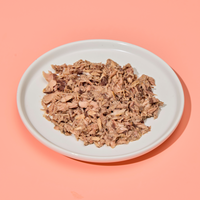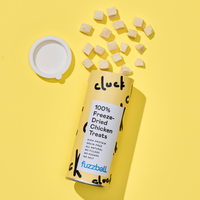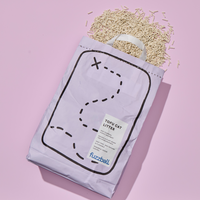What Are the Benefits of Grain-Free Dry Cat Food?

Grain-free dry cat food has gained popularity among pet owners looking for a diet that aligns with a cat’s natural instincts. Packed with high-quality proteins and essential nutrients, it provides a cleaner, more digestible alternative to traditional dry food. Many cats thrive on grain-free formulas. Without unnecessary fillers, every bite is designed to support optimal health, making it a preferred choice for those who want the best for their feline companions.
What Does Grain-Free Cat Food Mean?
Unlike many other terms used on pet food packaging, “grain-free” does have a specific, regulated definition. Grain-free refers to dry food for cats that do not have certain ingredients. This includes grains like barley, corn, oats, rice, rye, and wheat. It also includes grain by-products like bran gluten, hull, flour, and starch. If a cat food contains none of these ingredients, that food is “grain-free” by definition.
Does Grain-Free Dry Cat Food Also Mean Gluten-Free?
Since gluten is a protein found in grains, all dry cat food that is grain-free is automatically gluten-free. Although gluten allergies and sensitivities are a major topic in human nutrition, cats are unlikely to have these allergies.
Are Grain-Free Cat Foods High In Protein?
Since meat is the primary ingredient in many grain-free cat diets, they are high in protein. Cats require protein for energy, power, and lean muscle because they are obligate carnivores.
What Are the Benefits of Grain-Free Dry Cat Food?
As pet parents, we want to give our pets the best life, and this starts by giving them the right, high-quality food. So, for you to understand whether grain-free dry cat food will help your feline friend, you need to take a look at the benefits it provides. Here are the benefits of grain-free dry cat food:

Contain High Meat Content
Just like their wild cousins, domestic cats are obligate carnivores, which means your cat thrives on a diet that is rich in animal protein.
The most crucial factor to take into account when selecting nutritionally sufficient cat food is its protein level. This provides the essential amino acids cats need, regardless of whether they contain grains or not. So, the benefit of switching to grain-free cat foods is that there is less guesswork for you. Protein should be the main ingredient in your dry cat food ensuring your cat is getting all the protein they need.
Fewer Carbohydrates
Although wild cats naturally eat a variety of foods, such as birds and small mammals, cats have developed to just eat whatever prey they can find. Thus, the main course was never carbohydrates.
Carbohydrates like wheat, corn, rice, and barley should only make up a small amount of a cat’s diet. So, while grains are a type of food that contains carbohydrates, it’s safe to say that grain-free cat food will have fewer carbohydrates.
Digestion
Additionally, cats lack specific enzyme pathways that enable other species to convert vital nutrients such as arachidonic acid, taurine, vitamin A, niacin, and arginine. For cats to avoid developing major health problems, their diets must contain larger amounts of all essential nutrients. Since grain-free dry cat food doesn’t have any carbohydrates and grains, they contain a lot more of the nutrients that your cat needs to keep them healthy and full.
Why Are Most Dry Cat Foods Not Grain-Free?
Many dry cat foods are made from grains like rice, corn, and wheat. This is because of their low cost of production, which enables the manufacturer to save money while still meeting the carbohydrate requirements for their products.
Since cats are carnivores and diets high in proteins rather than grain-based carbs more closely mimic their natural diet, many scientists think that grain-free cat food is better suited for them.
Are Grain-Free Diets Dangerous For Cats?
For cats, grain-free diets do not pose a health risk. As long as cats get enough protein and important nutrients, there is no danger in feeding them a grain-free diet. In fact, it can benefit them in several ways.





